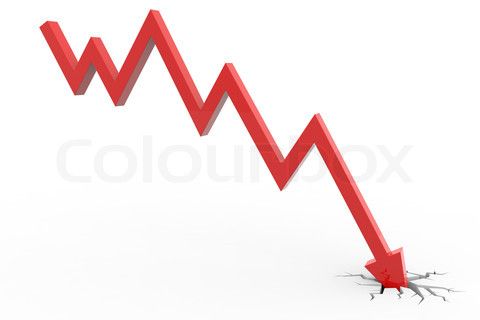It is only a matter of time before the stock market sinks by 50% or more, according to several highly regarded experts.
“We have no right to be surprised by a severe and about to happen stock market crash,” explains Mark Spitznagel, a hedge fund manager who is infamous for his hugely profitable billion-dollar bet on the 2008 crisis. “In fact, we must totally expect it."
Unfortunately Spitznagel isn’t the only one saying this.
“We are in a gigantic financial asset bubble,” informs Swiss adviser and fund manager Marc Faber. “It could burst any day.”
Faber doesn’t hesitate to put the blame directly on President Obama’s big government policies and the Federal Reserve’s risky low-rate policies, which, he says, “penalize the income earners, the savers who save, your parents — why should your parents be forced to speculate in stocks and in real estate and everything under the sun?”
Billion-dollar investor Warren Buffett is believed to be preparing for a crash as well. The “Warren Buffett Indicator,” also known as the “Total-Market-Cap to GDP Ratio,” is breaching sell- alert status and a fall down may happen at any instant.
So with a foreseeable crash alarming, what are Main Street investors to do?
One alternative is to sell all your stocks and stuff your money beneath the mattress, and another choice is to risk the whole thing and travel through the hurricane.
What Causes a Stock Market Crash?
First, let's see how a normal market operates.
Imagine you have a dress shop that sells frocks in three colors: red, white and blue. When you take your weekly account, you find that the red dresses are hot -- you can't keep them in stock -- while the white dresses are selling reasonably, and the blue dresses hardly at all.
Based on your study, you make a decision to discount the price of the blue dresses to try to get them moving, lift the price of the red dresses to make more profit, and leave the price of the white ones alone. These are the usual dynamics of supply and demand: Items in high demand cost more, items in low demand cost less. Now, picture that after a few weeks you notice that none of your dresses are selling, no matter what the color. At first you think it's just a temporary happening so you discount each color to some extent, but a week later you still haven't sold any dresses. Now you start to get a bit scared and cut prices even more.
Then a news story shatters saying that dresses are out of fashion. All of a sudden not only are you trying to discount your dresses greatly, but so are your contenders, even the factories that make dresses. The price of dresses sink in a free-fall, or collapse. This is exactly how a market crash works -- just replace individual stocks for the different colored dresses.
In a normal market, prices rise and fall based on supply and demand for individual stocks. But when investors as a set start to close their wallets and sellers can't find buyers, prices will drop more usually. This type of action is typical of recoil in an otherwise healthy market, but when combined with a negative section of news or data, it can strengthen selling.
If those early rounds of selling cause stocks to break certain technical indicators, like the 200-day moving average -- the gauge some large institutions use to define a bull or bear market -- then selling can become extensive and persistent, quickly driving prices down further. And as investors' accounts lose worth, those who have bought on margin will often have to clear up more of their assets to cover their loses, spurring new waves of selling.
So at the end of the day, crashes happen when there are more sellers in the market than buyers. This inequity is caused by the insight of market participants, and can be based on analysts' estimates, corporate earnings, macro political or economic events, or a thousand other bits of data.
The vital thing to remember is that, at some point, it doesn't really matter what the method for the selling is, because as it increases, the technicalities of the markets ultimately take over and the trend will continue until it's worn out. Understanding those technicalities and recognizing them when they begin will help you to step aside in time to avoid the bloodshed of a market crash.
I encourage your feedback in the comments below.




0 comments:
Post a Comment